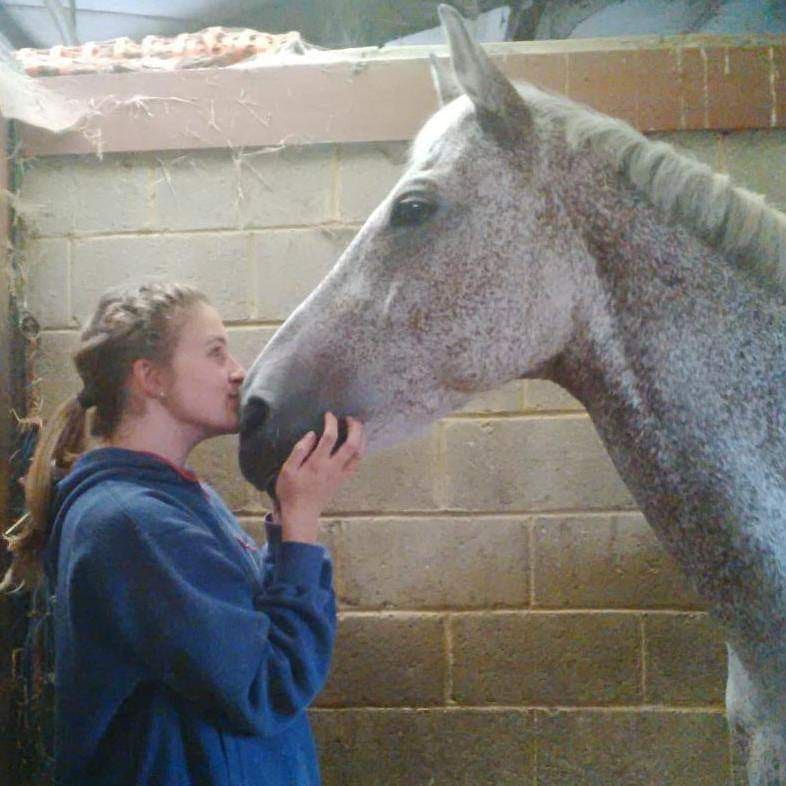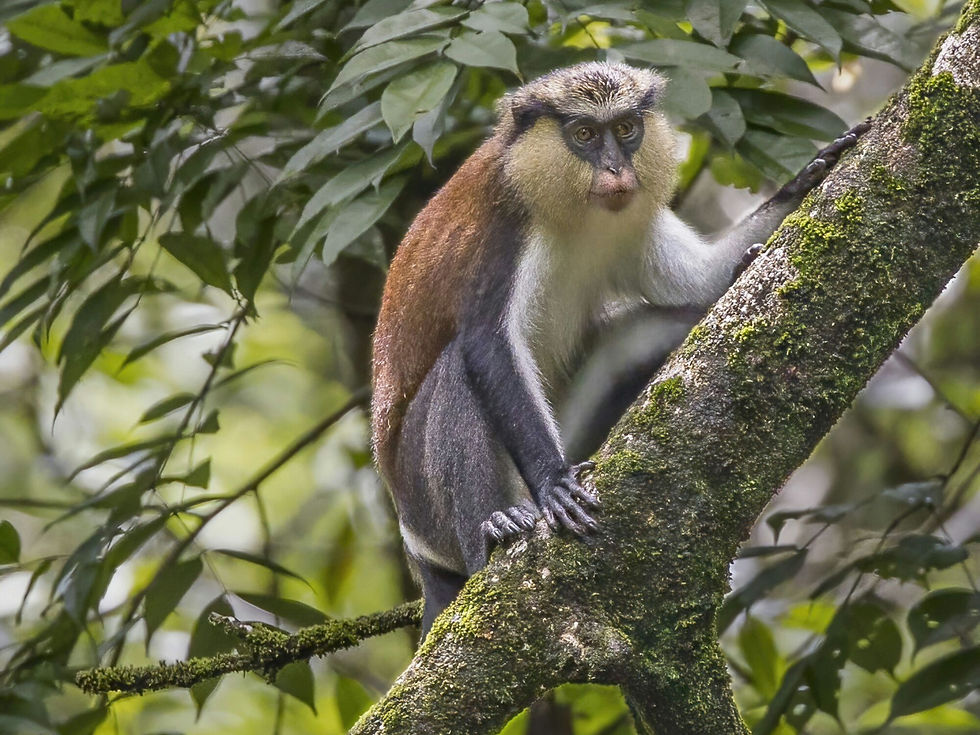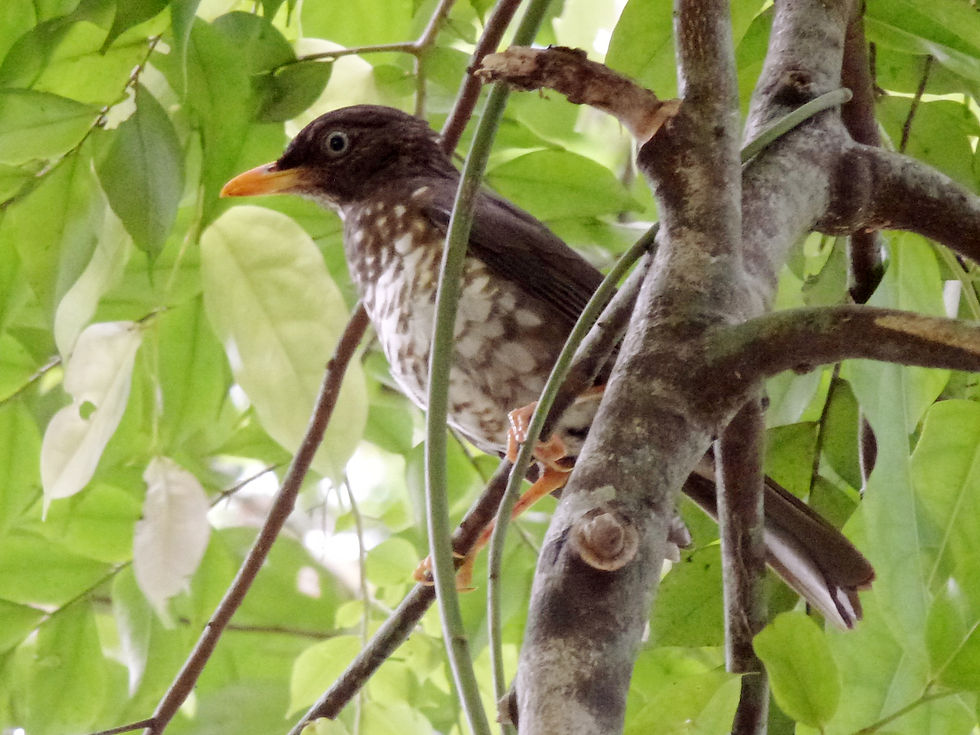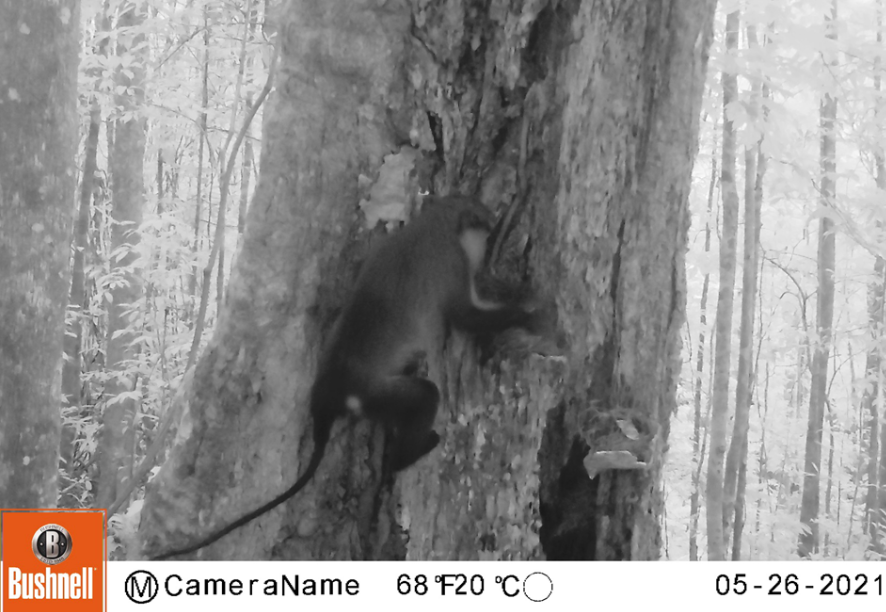Grave concern for the Critically Endangered Príncipe Thrush; the case of the invasive Mona Monkey
- Rhiannon Irving

- Jul 21
- 3 min read
On the island of Príncipe, there is an urgency amongst conservationists monitoring the critically endangered Príncipe thrush Turdus xanthorhynchus. With an estimated population of less than 250 individuals, the invasive Mona Monkey Cercopithecus mona, could be having a dangerously significant effect on the breeding and chick survival of the thrush.

The Mona Monkey , with its bright white belly, its reddish-brown back and its black mask, is found mostly in Southwest Africa. Considered Near Threatened by the IUCN, its population is decreasing across most of it's range. Between around 350-500 years ago, the Mona Monkey was introduced to the islands of São Tomé and Príncipe, existing as an invasive species on these islands. The monkey is a generalist species, eating a wide range of food including fruit, seeds, flowers, insects and small vertebrates, as well as natural and processed foods scavenged from human communities. They inhabit a variety of habitats such as primary and secondary rainforests, mangroves and even rural gardens, making it an incredibly adaptable species. Despite its flexible lifestyle, it faces a multitude of threats, particularly habitat loss by increased urban development and a lack of the natural foods it relies on, causing them to crop raid on occasion.

On the same island, in the same habitats, a multitude of endemic bird species reside, including the critically endangered Príncipe Thrush, and at least a further 10 species. The Thrush population is estimated at less than 250 individuals, and their range is isolated to a small Southern forest in Principe Natural Park. The Mona Monkey is a key predator of their eggs and chicks, as well as other introduced mammals such as Black rats Rattus rattus, African Civet Civettictis civetta and feral cats and dogs. Island species are particularly vulnerable to invasive mammals, as islands have little to no large, native mammalian predators, due to the isolation which restricts the movement from other areas. The Thrush is clearly at significant risk.
A study initially reported as a short article in 2021, and then as a full research paper in June 2025, used camera trap monitoring of 55 artificial thrush nests with quail eggs. 42% (23 nests) were predated within 6 days, although the specific predator could not be identified in 13 of these instances due to equipment defects. In the remaining 10, all were predated by the Mona monkey. Furthermore, researchers discovered an active thrust nest and monitored it for 50 days, reporting that Mona monkeys visited the nest on five occasions. It could indicate the Mona Monkeys are themselves monitoring nest sites; but regardless, they are without a doubt disrupting the breeding of the critically endangered thrush.

The likelihood of predation was assessed in different habitats, including the proximity to human communities, tree width, forest type and the height of the nest. The data indicated that predation rates were higher the closer to human communities, in thinner trees and in higher nests. The proximity to human settlements is particularly interesting, given the tendency for Mona monkeys to crop raid. Availability of food is easier to obtain and more sustained in human settlements, providing a constant food source. This is not without risk however, hunting is allowed outside of the national park, in order to reduce the population of the monkeys to protect the endemic species. The hunting has driven the monkeys into the national park where the majority of endemic species reside. Hunting inside the park is now being considered as a viable option in reducing monkey populations.
Other methods of reducing predation could include specialised nest boxes, with passive barriers and carefully engineered materials to prevent invasive predators from destroying them. Examples of these reinforced and carefully designed nest boxes come from a global study assessing the impacts of nest boxes on reducing bird predation. The effects of specific designs of nest boxes (such as those below) have not been extensively studied, however, on some European species such as Great tits, Blue tits and Eurasion sparrows, there is evidence of reduced predation by species such as weasels in the UK, and snakes in Spain. These results could potentially be replicated in Principe, offering protection for the critically endangered bird.
What remains however, is the urgent need to continue efforts to implement practical conservation methods, whether that may include hunting the monkeys, or using specialised nest boxes. Research continues by the Fundação Príncipe to conduct field studies and environmental monitoring as part of their program of terrestrial conservation projects. The passion and dedication of conservationists offers hope for the survival of the Príncipe Thrush.








Comments